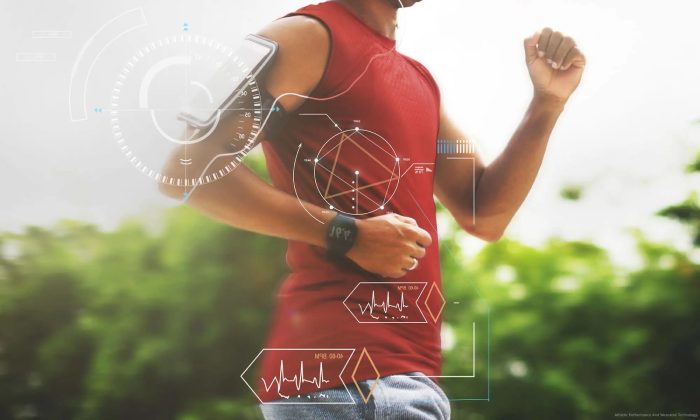Athletic Performance And Wearable Technology

Athletic Performance And Wearable Technology
Table of Contents
Overview
Thanks to today’s sophisticated technology, men can have easier and more productive lives. One such invention is wearable technology, which can quickly assess how well the body and organs operate. This blog is about wearable technology, its advantages and disadvantages, with a special emphasis on how it affects athletes.
Wearable Technology Is What?
The term “wearable technology” describes gadgets that may be fastened to the body and monitor performance metrics while engaging in physical activities, including running, swimming, walking, and other sports. This function is served by several products on the market, including Fitbit, Polar, Apple Watch, and Garmin.
How Can They Be Beneficial To Athletes?
Coaches and athletes are constantly open to new ideas that might help them perform better. Small, reasonably priced, and able to be attached to any part of the human body, wearable electronic gadgets are gaining popularity. While engaging in physical activity, the gadgets use electro-mechanical systems to assess heart rate, acceleration, speed, and force. These sensors are useful for persons who practise running, swimming, skating, and jumping since they can monitor stride rate, stroke rate, force analysis, and ground contact time.
Advantages Of Wearable Technology For Athletics
Athletes could not use public spaces and different training tools because of the Covid-19 epidemic. At this time, wearable technology was important.
The most significant advantage is that these devices can deliver continuous data. Force-sensing resistors are used in footwear, bicycle pedals, and ski boots for continuous tracking. Sportspeople can track their leaps every training session over a week or several months. They may now monitor their development without using time-consuming, traditional procedures. Some tools aid in injury prevention as well. An accelerometer, for instance, can count the strokes a swimmer makes and detect body roll, which may be used to predict shoulder injury risk.
Wearable Technology-Related Mistakes
Wearable technology offers many advantages, but it also has the potential to make mistakes.
- Since the methods employed to measure the data might be flawed, the data might not always be correct. The data must be accurate and trustworthy since it relates to changing training methods.
- The context of the data should be considered by those who train trainees. They should be able to compare the data to discover changes over time. The data remains worthless in the absence of this.
- Wearable gadgets generate enormous amounts of data when numerous sessions and trainees are involved. These data must be properly analysed and contextualised to aid the trainees in formulating performance-improving plans.
Conclusion
Like any other industry, sports is anticipating further AI advancements to ease the strain of competition. Even though wearable technology will inevitably lead to mistakes, athletes benefit greatly. Let’s hope that wearable technology opens up new opportunities for sportspeople to better their tactics and performance in the future.




